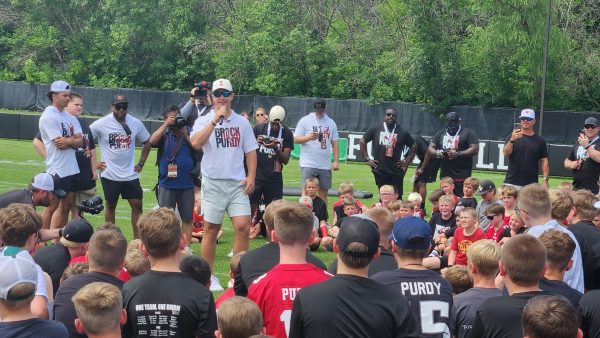Football recruits boast successful wrestling background
April 25, 2012
The choice between helmet or headgear was tough for Kane Seeley.
The Elite All-State linebacker and two-time state champion for Perry (Iowa) High School wrestled with the idea of competing collegiately in wrestling before deciding to accept a scholarship offer to play football at Iowa State.
“It was a tough decision up until last spring,” Seeley said. “I just realized that I had more of a passion for football and I just would see myself more as a football player in college than a wrestler. I just enjoy football more.”
On National Signing Day, on Feb. 1, ISU football coach Paul Rhoads said “you can’t recruit enough wrestlers” like Seeley, who notched four falls, two technical falls and a major decision en route to his two state titles — one at 215 pounds as a junior and his second at 220 as a senior.
“They’ve got great leverage, they’ve got great balance and they’ve got a mental toughness that I don’t know if it exists in any other sport,” Rhoads said. “They lift and they run and there’s just a strong mental toughness that goes along with that particular individual.”
Collin Bevins of Creston, Iowa, also will be joining the ISU football program as a state champion in wrestling having pinned his way to the 2-A state title at heavyweight in February.
For Bevins, who was pinned by Seeley in the 2-A 215-pound title match in 2011, the choice between wrestling and football was easy.
“I have no interest in wrestling in college,” Bevins said. “I don’t really like wrestling that much. I mean, I did it a lot to get better at football and getting mentally tougher and physically tougher.”
Breeding toughness in wrestling is one of the attributes — among others — that ISU wrestling coach Kevin Jackson said complements success on the football field. For Bevins, who played defensive end at Creston High School, wrestling also helped with other aspects of football as well.
“One thing that wrestling does, especially based on the positions, would be the hand-to-hand combat that wrestling makes you an expert at,” Jackson said. “I think that carries over well to the football field. The hand-to-hand stuff, the tackling — being able to take a guy down and how they train guys in the NFL is to shoot the double-leg takedown on him in the open field.”
Losing two recruits like Seeley and Bevins to football is never easy for wrestling programs, especially for Jackson, whose team concluded its worst-ever finish at the NCAA Championships in March with a 35th-place showing.
“I’m going to have to go down and see [Rhoads] tomorrow and talk to him about letting those wrestlers that are state champions stay wrestlers,” Jackson joked in February. “But he’s doing a great job recruiting and you can’t blame him for putting another couple good athletes on his team.”
Wrestling finds itself at a disadvantage when recruiting prospects like Seeley and Bevins because a Division I wrestling program only has 9.9 shared scholarships to offer compared to football’s 85 full-ride scholarships. This can simplify any prospect’s choice if they’re on the fence.
“It’s very rare to see a full scholarship offered for wrestling, whereas football you can get a full scholarship more handily,” said Trevor Kittleson, the Perry wrestling coach who coached Seeley to his second state title last February. “I would say a lot of the bigger guys in wrestling that are proficient in football as well would choose football over wrestling most of the time.”
Both Bevins and Seeley said they did not receive scholarship offers to wrestle collegiately.
Had he been offered a scholarship for wrestling, Seeley said the full-ride scholarship for football would still be one of the deciding factors if he was torn between the two.
“I wouldn’t have gotten any full rides at all [for wrestling],” Seeley said. “People stay in debt for years paying [college] off, and being able to get a full ride is a big advantage for football.”
Bevins said he would be vying to play defensive tackle — and gain 40 pounds to do so — upon joining the team, while Seeley said the coaches want him at either inside or outside linebacker depending on how much weight he gains as well.
Since the future roommates will be trading in their singlets for cleats full time when they arrive on campus in June, those of the wrestling community may have some room to lament the departure of two of its more talented prospects.
“With the more publicity going toward football than wrestling, it’s easier for kids to see the publicity of football and choosing that,” Kittleson said. “I do think it’s a little bit of a problem for wrestling as a whole sport, but it’s hard to blame a kid for doing what’s best for them as well.”
















